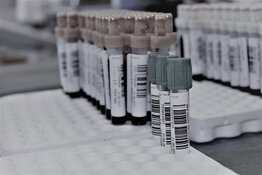The Life Sciences Report: I know you have great interest in cancer drug development. Do you see hematology/oncology (heme/onc) indications as areas of unmet need right now?
John McCamant: Heme/onc has been an area of success for biotech companies. We have seen Celgene Corp. (CELG:NASDAQ) target multiple myeloma with Revlimid (lenalidomide), and we've seen other drugs in this space, such as Genentech/Roche Holding AG's (RHHBY:OTCQX) Rituxan (rituximab) targeting B-cell lymphomas. Pharmacyclics Inc. (PCYC:NASDAQ) has been a big winner for us at the Medical Technology Stock Letter, with its Bruton's tyrosine kinase (BTK) inhibitor ibrutinib (PCI-32765). BTK is found in blood cells, including the B cells.
It is easier to measure tumor loads in heme/onc than in the solid tumors, where you have to evaluate response rates—excepting survival rates, of course—with imaging techniques. The clinical trial endpoints are clear, and that makes the sector a good place for investors.
The other factor is that the size of heme/onc markets don't always reflect the potential impact the drugs can have in a broader market. A lot of drugs approved in this space will work in other types of hematological cancers and other types of disease. The initial markets shouldn't be thought of as too small because the drugs could open up much larger market opportunities down the road. Take Rituxan, which was originally thought to be only a niche product. Now it and other B-cell targeting agents have been expanded for use in autoimmune disease, such as rheumatoid arthritis.
"The clinical trial endpoints are clear in the hematology/
oncology space, and that makes the sector a good place for investors."
I'm a non-scientist, but I think most biotech investors can understand how cancer drugs work in hematological cancers versus solid tumors. It is really simple. Heme/onc disease is more susceptible to drugs because it doesn't amass itself into a solid tumor, where you literally have to debulk and get at multiple layers. Heme/onc disease is circulating in the blood. If we get drugs into the bloodstream, they have a chance to get at almost all of the cancer cells, whether we use a targeted biologic drug or a chemotherapy. Fundamentally, I think that is why we have had more success with heme/onc than with solid tumors.
TLSR: You make an interesting point about blood cancers not being encapsulated or amassed, and therefore more accessible to drug therapies. Azacytidine and decitabine have been successful in treating myelodysplastic syndromes (MDS/diseases of the blood and blood marrow in which blood stem cells do not mature into functional white blood cells, red blood cells and platelets). Yet when the same principal investigators attempt to translate those drugs to solid tumors, they haven't had the same magnitude of success.
JM: It makes sense. Think about drug resistance in cancers. Once you treat a solid tumor the first time, if it is not completely debulked, the tumor and its cells develop resistance. This makes the tumor more resistant the next time you come at it with the drug, as it may not have been completely exposed to the drug the first time.
TLSR: Do you see any particular blood cancers that are in great need of new therapies?
JM: There are not a lot of great new drugs on the market now for MDS and acute myeloid leukemia (AML), so that's an area where there is some unmet need. Also, these disorders tend to manifest in elderly patients, who cannot tolerate as many cycles of chemotherapy or as many aggressive drug regimens. It is a unique patient population, composed of people who are more fragile but severely ill. MDS and AML look like a couple of nice opportunities for investors. You don't need to have patient populations in the hundreds of thousands in cancer. Tens of thousands represent very good-size markets in this space.
TLSR: John, the cover page of the 2008 annual report for Cyclacel Pharmaceuticals Inc (CYCC:NASDAQ) had a picture of an 82-year-old patient who had failed standard chemotherapy for AML. He was treated on an expanded access (compassionate use) basis with Cyclacel's sapacitabine, which was in phase 1 trials at the time. The patient achieved two more birthdays after having been given two weeks to live by his physician in Odessa, Texas. Here we are now, toward the end of 2012, and the drug is in phase 3 for AML and late phase 2 for MDS. This feels like a painfully slow process. Over the last three years the regulatory process for drug development has been accelerated under the Obama administration, with drugs approved faster and earlier than anticipated in some cases. How much difference can these new U.S. Food and Drug Administration (FDA) policies make?
JM: The FDA only represents a small slice of the timeline or cycle in drug development. The two critical components are more in the company's control. The first is enrollment. Does the company want a fast trial that has loose exclusion/inclusion criteria so that it ultimately ends up with more patients who might not fit the criteria? Or should the company exhibit more patience and only enroll the appropriate patient population? We certainly prefer the latter, as you rarely get a second chance in drug development once you fail in the clinic.
"The initial markets shouldn't be thought of as too small because the drugs could open up much larger market opportunities down the road."
The other issue is that companies must deliver survival data, or at least progression-free survival data. That takes a long time. Even if patients are expected to live six, eight or 10 months in the trials, it can still run a year or two after the trial is fully enrolled. There is no way to accelerate development in a phase 3 trial where survival is used as an endpoint.
But my point is that enrollment is key. If a trial is designed to be fast and it gets the right patients, it could be a sign of patients voting with their feet and crossing over into the experimental arm of the study. We believe that is happening with Pharmacyclics. It almost has to fight patients to keep them out of the trial. Those are some of the battles companies must wage to manage expectations, particularly with investors.
TLSR: We just got some news from Cyclacel. It announced data in an ongoing phase 2 trial with sapacitabine for older patients with MDS who had failed azacitidine and/or decitabine. Expected survival rates were doubled. What is your opinion on this study?
JM: We looked at some of the data, and the data looks solid, particularly with the phase 3 trial ongoing in AML. That makes a difference for us. The key is the larger phase 3 trial with AML: The potential gives the Street and analysts a little more confidence. The phase 2 MDS trial does not use a placebo as the control arm, as it would be unethical to not use standard-of-care in elderly and frail patients. We also know that other trials are coming, using the Cyclacel compound in similar cancers. The data have been good to date, and the stock has responded nicely. We look forward to viewing the phase 3 data in AML.
TLSR: Do you cover Cyclacel in your newsletter?
JM: No, but we've followed Cyclacel over the years. Frankly, it has been slow in development, but things seem to be accelerating, and the valuation looks pretty attractive right now. The company is a little low on cash, so we would not be surprised to see it trying to raise some capital. Also, it does not yet have a partner, which would help validate the technology. But it has a pretty good development team and a very nice pedigree, with Christopher Henney, a co-founder of Dendreon Corp. (DNDN:NASDAQ) and Immunex Corp. (acquired by Amgen Inc. [AMGN:NASDAQ] for $16 billion in 2002), as a board member. We're going to do a little more homework on Cyclacel. We are trying to sit down with management and get its take on what's going on as the company moves forward.
TLSR: Because of the recent data, Cyclacel's stock is up sharply over the last month. However, even with its performance, the company only has a $46 million ($46M) market cap.
JM: That's the key number. We can talk about share prices and all these other numbers, but that market cap really dials us in. For a phase 3 cancer company, that's an unusual valuation. The recent price rise probably increases the odds that the company can go out and raise some money. But Wall Street is skeptical when it comes to unpartnered small biotech companies. It is hard for these types of companies to gain traction or get any visibility. At the end of the day, if Cyclacel keeps doing its job and delivering good data, valuation will take care of itself.
TLSR: Can you speak to Astex Pharmaceuticals Inc. (ASTX:NSADAQ) (formerly SuperGen Inc.)? It is also heavily involved in the heme/onc space.
JM: Astex is a different type of company. It has been around for quite some time under a different name. It made a good move when it merged with a British company and acquired a platform technology. Now Astex appears to be making some moves forward in the heme/onc space. That being said, we're looking at a much different valuation.
TLSR: A $276M market cap, right?
JM: The market cap is five times that of Cyclacel. But Astex has an approved MDS product, Dacogen (decitabine), and it generates some revenue with that product. Management is solid. Generally, investors want an exciting molecule rather than a revenue-producing, older cancer drug. It can be difficult running two different companies at the same time—one having a sales organization out there marketing, and the other focusing on research and development. It is a lot for a smaller company to manage effectively.
TLSR: Dacogen is a DNA methyltransferase inhibitor used in MDS and AML. If Cyclacel gets sapacitabine approved for those indications, how much would that eat into Dacogen revenues?
JM: Quite possibly a good bit, because we are talking about a novel oral compound from Cyclacel. Safety is more important in these elderly patients, but efficacy is needed.
TLSR: Would you consider following Astex in your newsletter?
JM: We have been tracking it off and on. We've known the company as SuperGen, from back in the day. But we have learned to never say never. The acquisition of Astex Pharmaceuticals (the British company mentioned above; SuperGen changed its name to Astex following the merger), with its discovery platform, is intriguing to us. It looks like the lead molecules make sense and are in the right cancer space. But the company has a different valuation than Cyclacel. We'll do some work here, but it looks like the more exciting molecule might be at Cyclacel.
Both companies are interesting. They are taking two different approaches. In theory, using revenue-producing drugs to support the research and development of the other compounds can work if it's executed well.
TLSR: I've enjoyed talking with you very much, as always.
JM: Thank you. It's my pleasure.
John McCamant joined the Medical Technology Stock Letter as associate editor in 1987 and was named editor of this leading investment newsletter in August 2000. McCamant has spent 25 years on the frontlines of biotechnology investing. As an equities analyst for the American Healthcare Fund, he uncovered investment opportunities and guided investment strategy. At Burrill & Company, a San Francisco-based private merchant bank, he was a lead in raising $75M for a venture capital fund. McCamant has established an extensive network that includes contacts throughout the investment banking and venture capital communities. His expertise in biotechnology investments is a subject of media interest. He is frequently consulted and quoted by the Washington Post, Business Week, Reuters, Bloomberg, CBS and Marketwatch.
Want to read more exclusive Life Sciences Report interviews like this? Sign up for our free e-newsletter, and you'll learn when new articles have been published. To see a list of recent interviews with industry analysts and commentators, visit our Exclusive Interviews page.
DISCLOSURE:
1) George S. Mack of The Life Sciences Report conducted this interview. He personally and/or his family own shares of the following companies mentioned in this interview: None.
2) The following companies mentioned in the interview are sponsors of The Life Sciences Report: Cyclacel Pharmaceuticals Inc. Streetwise Reports does not accept stock in exchange for services. Interviews are edited for clarity.
3) John McCamant: I personally and/or my family own shares of the following companies mentioned in this interview: None. I personally and/or my family am paid by the following companies mentioned in this interview: None. I was not paid by Streetwise Reports for participating in this interview.












































